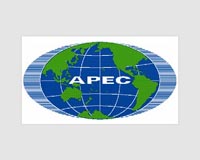| . |  |
. |
Washington (AFP) Nov 16, 2009 Soaring interest by Chinese students has led to record foreign enrollment at US universities, offering a potential boon to the United States both economically and politically, a study said. Indians remained the biggest group of foreign students in the United States in the last academic year but their numbers appeared to be leveling off, while strong growth came from China, Vietnam and several other emerging economies. The United States hosts far more foreign students than any other country, owing to their universities' reputation, flexibility and concerted recruitment drives, said the Institute of International Education, an educators' group. The number of foreign students increased eight percent to a record 671,616 in 2008-2009 from the previous academic year, the sharpest growth since 1980-81, the group's annual report said Monday. With foreign students generating close to 18 billion dollars a year, officials and educators said higher education was proving to be a strong engine to bolster the troubled US economy. Judith McHale, the undersecretary of state for public diplomacy, said US universities were also a crucial element in improving the US image around the world by offering foreigners a first-hand look at the United States. "One of the things that has struck me is that everywhere I've gone -- even countries where we have a very difficult situation in terms of perception of the United States, throughout the Middle East, in Pakistan and elsewhere -- you find continued interest in people coming to the United States to study," she told an event releasing the research. Saudi Arabia was among the countries that sent more students to the United States last year, with the number jumping 28 percent from a year earlier to 12,661. But China was the key driver of growth, with the number of Chinese students heading to the United States increasing 21 percent to 98,510. "Even though we know there has been a financial crisis, the Asian economies have not been as badly hit as the US," said Rajika Bhandari, who directed the research for the Institute of International Education. "Chinese families tend to be smaller and put aside great resources to invest in their children's education," she said. The United States also enjoyed dramatic growth in the number of Vietnamese students, with the figure soaring by 46 percent last year. The only country that saw a significant decline was Japan. The number of Japanese studying in the United States slipped nearly 14 percent, a trend the study pinned on Japan's shaky economy and shrinking population. More than half of US universities promoted themselves overseas, said the report, which was released the same day that US President Barack Obama met with students in Shanghai. The United States remained by far the biggest single destination for students studying outside their own country, but the gap has narrowed in recent years with Britain, its biggest competitor. The United States in 2008 pulled in 21 percent of the world's estimated three million foreign students, compared with 13 percent for Britain. France came in third at nine percent, followed closely by Germany. But in a sign there is room for growth, foreigners made up only 3.5 percent of the overall student body in the United States, compared with 16.3 in Britain and 22.5 percent in Australia. Bhandari, the researcher, said the United States has largely addressed concerns about slow issuance of student visas in the wake of the September 11, 2001 attacks, although some applicants still had negative perceptions about the visa process. She said British universities were now facing troubles over student visas after London reformed its immigration system. The study also found that a record 262,416 Americans studied overseas the same year. More than half went to Europe but a growing number headed elsewhere, with 19 percent more going to China than a year ago and 14 percent more to Japan. Share This Article With Planet Earth
Related Links Global Trade News
 APEC eyes trans-Pacific free-trade zone
APEC eyes trans-Pacific free-trade zoneSingapore (AFP) Nov 12, 2009 Asia-Pacific economies pledged Thursday to pursue a giant free-trade zone covering 2.6 billion people and called for easier access to green technology to combat climate change. Foreign and trade ministers of the Asia-Pacific Economic Cooperation (APEC) group said they would direct their officials to study ways to achieve the long-term vision for a "Free Trade Area of the Asia Pacific", or ... read more |
|
| The content herein, unless otherwise known to be public domain, are Copyright 1995-2009 - SpaceDaily. AFP and UPI Wire Stories are copyright Agence France-Presse and United Press International. ESA Portal Reports are copyright European Space Agency. All NASA sourced material is public domain. Additional copyrights may apply in whole or part to other bona fide parties. Advertising does not imply endorsement,agreement or approval of any opinions, statements or information provided by SpaceDaily on any Web page published or hosted by SpaceDaily. Privacy Statement |